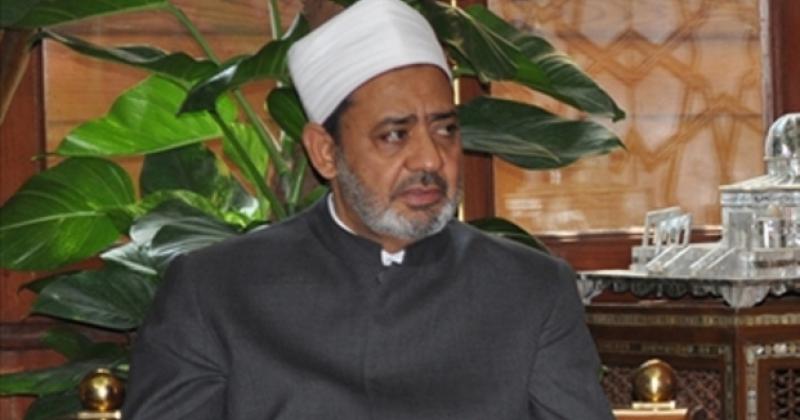Ending a five-year freeze in relations, Pope Francis is set to meet the Grand Imam of the al-Azhar Mosque, Ahmed el-Tayeb, in the Vatican on Monday. The al-Azhar mosque and university complex in Cairo, Egypt, is widely considered the most prestigious institution in the Sunni Muslim world.
Just to put things into perspective, Sunnis make up 80 per cent -90 per cent of the world’s Islamic population, meaning there are roughly 1.3 to 1.5 billion Sunni Muslims. There are also 1.2 billion Roman Catholics, by far the world’s largest Christian denomination.
Not that el-Tayeb is the “Sunni pope,” but still – it’s not often that two religious leaders who each, in some sense, can claim north of a billion followers are in the same room.
The Vatican has had relations with al-Azhar since 1998, but the dialogue has been frozen since January 2011, when Pope Benedict XVI reacted to an attack on Coptic Christians in a way heard by some in Egypt as a call to political interference.
The fact that things have thawed sufficiently to allow the conversation to resume is, therefore, a sign of progress. It’s likely related to the fact that it’s hard to know what more any pontiff could have done over his first three years to pile up “street cred” in the Muslim world than Francis.
To begin, there’s the obvious fact that as an Argentinian, Francis is not associated with Western history or foreign policy. Moreover, Francis has a history of outreach to Islam, including his friendship with Omar Abboud, the Muslim director of the Institute for Interreligious Dialogue in Buenos Aires.
When Pope Francis opposed the idea of Western strikes on the Assad regime in Syria in September 2013, the Grand Mufti of Syria, Ahmad Badreddin Hassoun, was so grateful he called on mosques across the country to join the Pope in prayer for peace on Sept. 7, 2013, while Francis celebrated a penitential liturgy in St. Peter’s Square.
Pope Francis has washed the feet of Muslim inmates during Holy Thursday rituals, he’s welcomed Islamic leaders to the Vatican, and recently he’s become Europe’s leading voice of compassion for Muslim refugees – including bringing three Syrian Muslim refugee families, 12 people in all, back with him to Rome after a recent day trip to the Greek island of Lesbos.
He’s also already visited five places with a majority Muslim population: Jordan, what the Vatican recognizes as the “State of Palestine,” Turkey, Albania and Sarajevo. For the record, Francis has yet to make even one state visit to Western Europe, the traditional cradle of Christendom.
In a recent La Croix interview,Pope Francis insisted “co-existence between Christians and Muslims is still possible,” and called the West to self-criticism on the way it’s tried to export democracy by force to Islamic nations such as Iraq and Libya.
One could go on, but the point is that Francis has put considerable political capital in the bank in the Muslim world. Monday gives him a chance to spend some of it, but how might he do that?
In the short term, he might be able to hit up el-Tayeb for an assist with a potential flash point next month, when the pontiff visits Armenia, including a stop at a memorial to the early 20th century Armenian genocide at the hands of the Ottoman Turks.
There’s not much anyone can do about the fact that the Turks will object, but perhaps el-Tayeb and other Islamic leaders can help ensure that those tensions don’t get spun up into another chapter in the “clash of civilizations.”
More broadly, Francis has the chance to encourage al-Azhar and other traditional Islamic authorities towards a more aggressive stance in the struggle against extremists, and in particular to commit themselves to the protection of Christians and other minorities in Islamic lands.
As fate would have it, there’s a ready-made vehicle Francis could recommend to do just that: the recent “Marrakesh Declaration,” a charter rooted in Islamic law for minority rights signed at a Jan. 25-27 gathering in Morocco, which brought together 250 Muslim scholars, jurists, clerics and government officials from 120 countries.
The declaration affirmed that for religious minorities in Muslim communities, “cooperation must go beyond mutual tolerance and respect, to providing full protection for the rights and liberties of all religious groups in a civilized manner that eschews coercion, bias and arrogance.”
The declaration also asserted “that it is unconscionable to employ religion for the purpose of aggressing upon the rights of religious minorities in Muslim countries.”
In a recent news conference at the National Press Club, retired Cardinal Theodore McCarrick of Washington, D.C., who’s been involved in interfaith dialogue and especially outreach to Muslims for decades, described the declaration as “the document I was hoping and praying for,” and virtually begged the media to give it “legs.”
It’s difficult to envision a better way of providing legs than if Pope Francis and el-Tayeb were to come out of Monday’s meeting touting the Marrakesh Declaration as a roadmap for reform, or at least citing it as one among other encouraging initiatives.
Of course, in engaging other faiths, popes always have to make hard choices about when’s the right time to push, and when doing so might be counter-productive. Perhaps Francis will feel that after a five-year freeze with al-Azhar, the very first get-together isn’t the right moment to be tossing down gauntlets.
In any event, the good news for Francis is that in making those judgments he’s playing with a net, because there’s arguably no other major world leader today, and certainly no Christian leader, who can more credibly claim the mantle of a “friend of Islam.”
